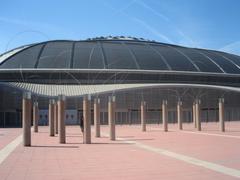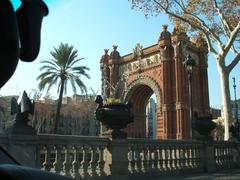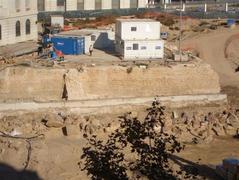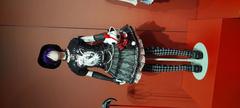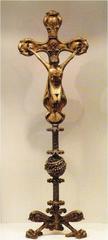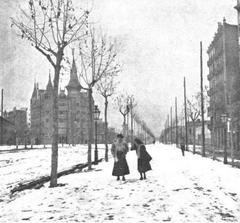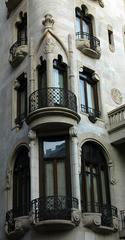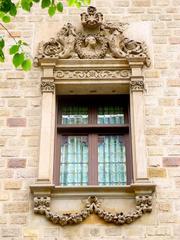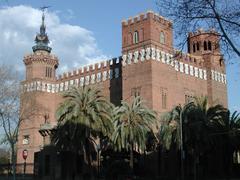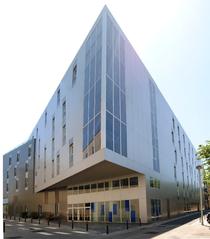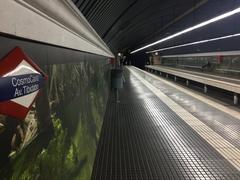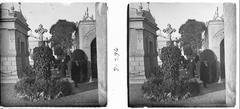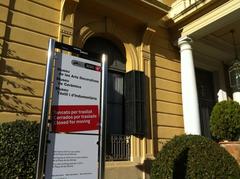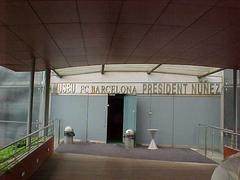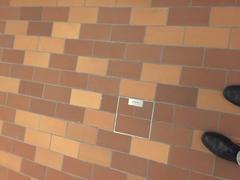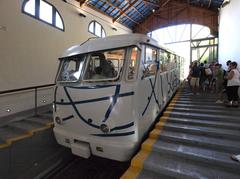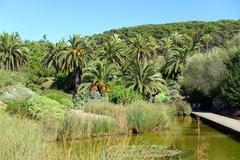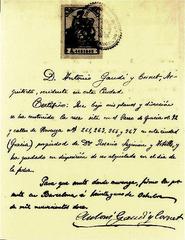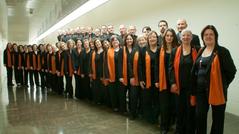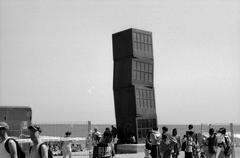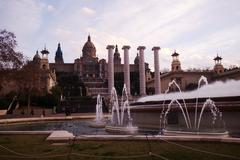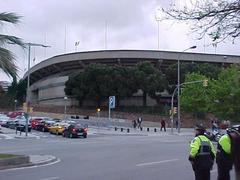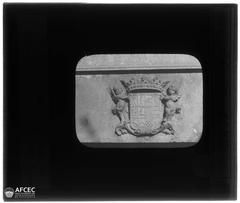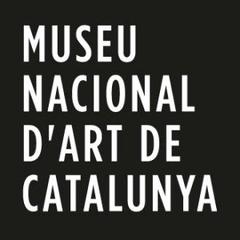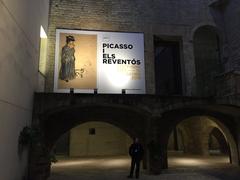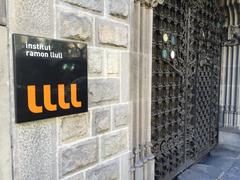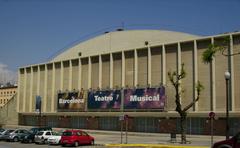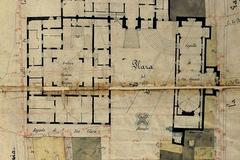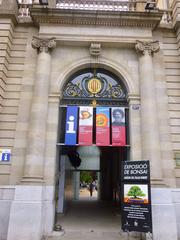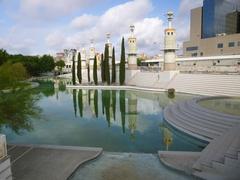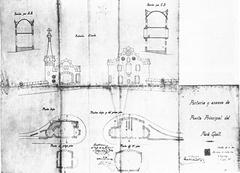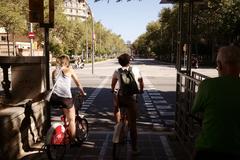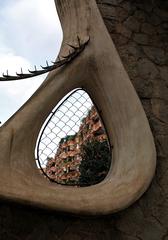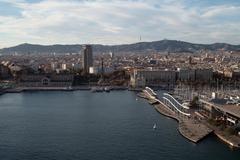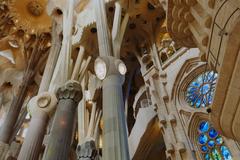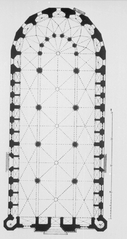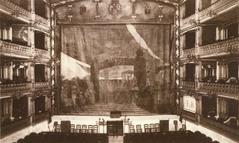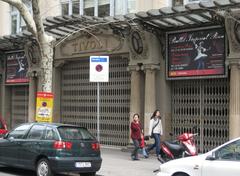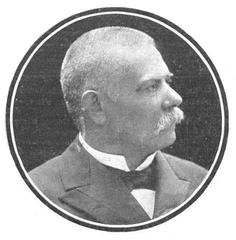Visiting Hours and Tickets for Montjuïc Lighthouse in Barcelona
Date: 31/07/2024
Introduction
Perched majestically on Montjuïc Hill in the vibrant city of Barcelona, Montjuïc Lighthouse stands as a beacon of history, culture, and maritime significance. This iconic landmark offers visitors an unparalleled view of the city and the Mediterranean Sea, making it a must-visit destination for tourists and locals alike. The lighthouse, with its rich history dating back to the early 20th century, has played a crucial role in maritime navigation, guiding ships safely into the bustling port of Barcelona. Its strategic location on Montjuïc Hill, which has been a pivotal site for various fortifications and lookout points since ancient times, adds to its historical and cultural significance (Wikipedia).
Montjuïc Hill itself, meaning ‘Jewish Mountain’ in medieval Latin and Catalan, has been a significant location since ancient times due to its commanding views over the Mediterranean Sea and the Llobregat River. The hill’s fortifications, including Montjuïc Castle and the lighthouse, have witnessed numerous historical events, from the Reapers’ War in the 17th century to the Spanish Civil War. Today, Montjuïc Lighthouse is not only a symbol of Barcelona’s maritime heritage but also a testament to the city’s resilience and cultural evolution (The Culture Trip) (Barcelona Metropolitan).
Visitors to Montjuïc Lighthouse can immerse themselves in its storied past while enjoying the breathtaking panoramic views it offers. The lighthouse is accessible via the Funicular de Montjuïc and the Montjuïc Cable Car, providing a scenic and convenient way to reach the top of the hill. In addition to exploring the lighthouse, visitors can also enjoy nearby attractions such as Montjuïc Castle, the Magic Fountain, and various museums and gardens, making Montjuïc Hill a full-day destination (Timeless Travel Steps).
Table of Contents
- [Explore Montjuïc Lighthouse: History, Visiting Hours, Tickets, and More](#explore-montjuïc-lighthouse-history-visiting-hours-tickets-and-moreexplore-montjuïc-lighthouse-history-visiting-hours-tickets-and-more)
- [Introduction](#introductionintroduction)
- [Early Beginnings and Strategic Importance](#early-beginnings-and-strategic-importanceearly-beginnings-and-strategic-importance)
- [Construction and Development](#construction-and-developmentconstruction-and-development)
- [Role During Conflicts](#role-during-conflictsrole-during-conflicts)
- [Modern Era and Restoration](#modern-era-and-restorationmodern-era-and-restoration)
- [Visitor Experience](#visitor-experiencevisitor-experience)
- [Significance in Maritime Navigation](#significance-in-maritime-navigationsignificance-in-maritime-navigation)
- [Cultural and Educational Role](#cultural-and-educational-rolecultural-and-educational-role)
- [Visitor Information](#visitor-informationvisitor-information)
- [FAQ](#faqfaq)
- [Conclusion](#conclusionconclusion)
Explore Montjuïc Lighthouse: History, Visiting Hours, Tickets, and More
Introduction
Perched majestically on Montjuïc hill in Barcelona, Montjuïc Lighthouse is a beacon of history and culture. This guide will explore its rich history, visiting hours, ticket information, and nearby attractions to help you plan an unforgettable visit to one of Barcelona’s most iconic landmarks.
Early Beginnings and Strategic Importance
Montjuïc Lighthouse, perched on the Montjuïc hill in Barcelona, has a history deeply intertwined with the strategic significance of the hill itself. Montjuïc, meaning “Jewish Mountain” in medieval Latin and Catalan, has been a pivotal location since ancient times due to its commanding views over the Mediterranean Sea and the Llobregat River. This strategic vantage point made it an ideal location for various fortifications and lookout points throughout history (Wikipedia).
Construction and Development
The lighthouse was constructed as part of the broader fortification efforts on Montjuïc hill. The earliest records of a lookout point on Montjuïc date back to 1073, highlighting the hill’s long-standing role in surveillance and defense (The Culture Trip). The lighthouse itself was built to aid in maritime navigation, guiding ships safely into the bustling port of Barcelona. Its construction was part of a series of enhancements to the hill’s defensive structures, which included the Montjuïc Castle, originally built in the 17th century and expanded in the 18th century (Barcelona Metropolitan).
Role During Conflicts
Montjuïc Lighthouse, along with the castle, played a significant role during various conflicts. The hill’s fortifications were crucial during the Reapers’ War in the 17th century and the subsequent Battle of Montjuïc. The lighthouse served not only as a navigational aid but also as a lookout point to monitor enemy movements and coordinate defensive actions (Wikipedia).
During the Spanish Civil War, Montjuïc Castle was used as a prison and execution ground, and the lighthouse continued to serve its dual purpose of aiding navigation and providing strategic oversight. The castle and its associated structures, including the lighthouse, were symbols of military power and control, often associated with political repression and conflict (The Culture Trip).
Modern Era and Restoration
In the modern era, Montjuïc Lighthouse has transitioned from a purely military and navigational role to a cultural and historical landmark. The hill was chosen as the site for the 1929 International Exposition, leading to significant developments, including the construction of the Palau Nacional and the Estadi Olímpic. These developments transformed Montjuïc into a cultural and recreational hub, with the lighthouse becoming part of the scenic landscape that attracts numerous visitors each year (Wikipedia).
The lighthouse and the surrounding fortifications were renovated and cleaned up for the 1992 Summer Olympics, further integrating them into the city’s cultural fabric. The castle, including the lighthouse, was returned to the City Council in 2007 and officially declared a cultural center in 2008 (Barcelona Metropolitan).
Visitor Experience
Today, Montjuïc Lighthouse is a popular tourist attraction, offering breathtaking panoramic views of Barcelona and the Mediterranean. Visitors can access the lighthouse via the Funicular de Montjuïc and the Montjuïc Cable Car, which provide a scenic and convenient way to reach the top of the hill (Timeless Travel Steps). The lighthouse is part of a broader network of attractions on Montjuïc, including the Montjuïc Castle, the Magic Fountain, and various museums and gardens.
The lighthouse itself is a testament to the rich history of Montjuïc, reflecting its evolution from a strategic military outpost to a vibrant cultural landmark. Visitors can explore the well-preserved fortress grounds, including the lighthouse, and enjoy the stunning views from the fortified walls. The lighthouse also serves as a venue for exhibitions and events, delving into the rich heritage of Montjuïc and its significance in Barcelona’s history (World Travel Toucan).
Significance in Maritime Navigation
Montjuïc Lighthouse has played a crucial role in maritime navigation for centuries. Positioned at a height of 173 meters above sea level, it provided a vital reference point for ships approaching the port of Barcelona. The lighthouse’s light, visible from a considerable distance, guided mariners safely into the harbor, helping to prevent shipwrecks and ensuring the smooth flow of maritime trade (The Culture Trip).
The lighthouse’s significance in maritime navigation is underscored by its inclusion in various historical records and maps. For instance, in 1792, French astronomers Jean Baptiste Joseph Delambre and Pierre François André Méchain used the fortress on Montjuïc, including the lighthouse, as a reference point for their measurements to establish the length of a meter. This scientific endeavor highlights the lighthouse’s importance as a landmark in both navigation and scientific history (Wikipedia).
Cultural and Educational Role
In addition to its historical and navigational significance, Montjuïc Lighthouse serves an important cultural and educational role. The lighthouse and the surrounding fortifications are part of the Museu Nacional d’Art de Catalunya, which houses a vast collection of art and cultural artifacts. Visitors can learn about the history of Montjuïc and its role in Barcelona’s development through various exhibitions and guided tours (Barcelona Travel Hacks).
The lighthouse also hosts a variety of cultural events, including art exhibitions, historical reenactments, and educational programs. These events provide visitors with a deeper understanding of Montjuïc’s rich heritage and its significance in the broader context of Barcelona’s history. The lighthouse’s role as a cultural venue underscores its transformation from a military outpost to a symbol of Barcelona’s vibrant cultural scene (Timeless Travel Steps).
Visitor Information
Visiting Hours: Montjuïc Lighthouse is generally open to visitors from 10:00 AM to 8:00 PM, though hours may vary seasonally. It’s recommended to check the official website for up-to-date visiting hours.
Tickets: While the exterior of the lighthouse and the surrounding grounds can be explored for free, there may be a small fee to enter the lighthouse and the castle. Combo-tours that include the cable car, Magic Fountain, and the castle are available and can be a cost-effective option.
Best Time to Visit: The lighthouse offers stunning views at any time of day, but visiting during sunset can provide a particularly breathtaking experience. The panoramic views of the city and the Mediterranean are especially beautiful during this time (Through Eternity).
Access: The lighthouse can be reached via the Funicular de Montjuïc and the Montjuïc Cable Car. Both options offer scenic views and are part of the Barcelona Metro system (Wikipedia).
Nearby Attractions: Montjuïc is home to several other attractions, including the Montjuïc Castle, the Magic Fountain, the Palau Nacional, and various museums and gardens. These nearby sites make Montjuïc a full-day destination.
FAQ
What are the visiting hours for Montjuïc Lighthouse?
- The lighthouse is generally open from 10:00 AM to 8:00 PM, though hours may vary. Check the official website for the latest information.
How much do tickets to Montjuïc Lighthouse cost?
- There may be a small fee to enter the lighthouse and the castle. Combo-tours that include other attractions are also available.
How can I access Montjuïc Lighthouse?
- The lighthouse can be reached via the Funicular de Montjuïc and the Montjuïc Cable Car, both part of the Barcelona Metro system.
What are some nearby attractions to Montjuïc Lighthouse?
- Nearby attractions include Montjuïc Castle, the Magic Fountain, the Palau Nacional, and various museums and gardens.
Conclusion
Montjuïc Lighthouse is more than just a navigational aid; it is a symbol of Barcelona’s rich history and vibrant culture. By following this guide, you can make the most of your visit and fully appreciate this iconic landmark. Don’t forget to check out other related posts and follow us on social media for more updates on Barcelona’s top attractions.
